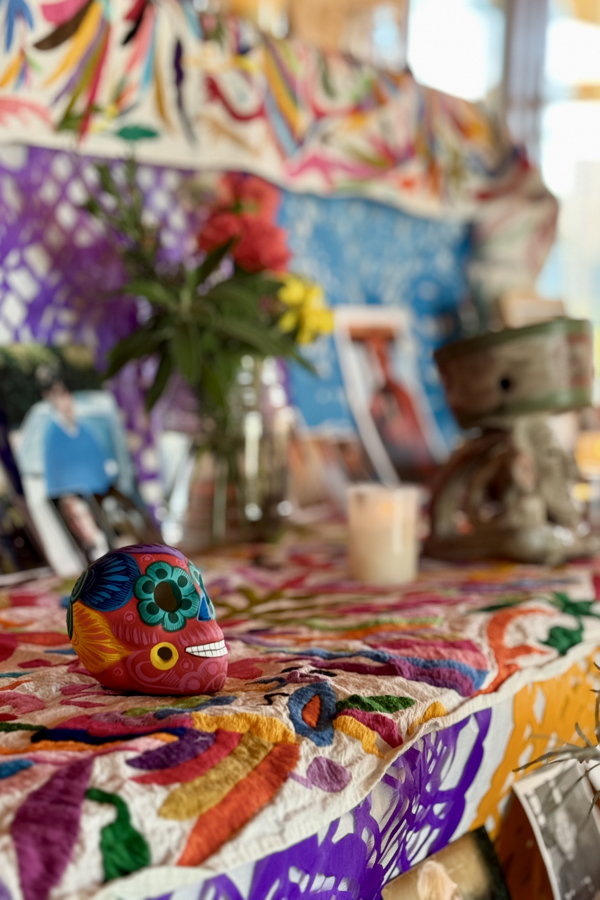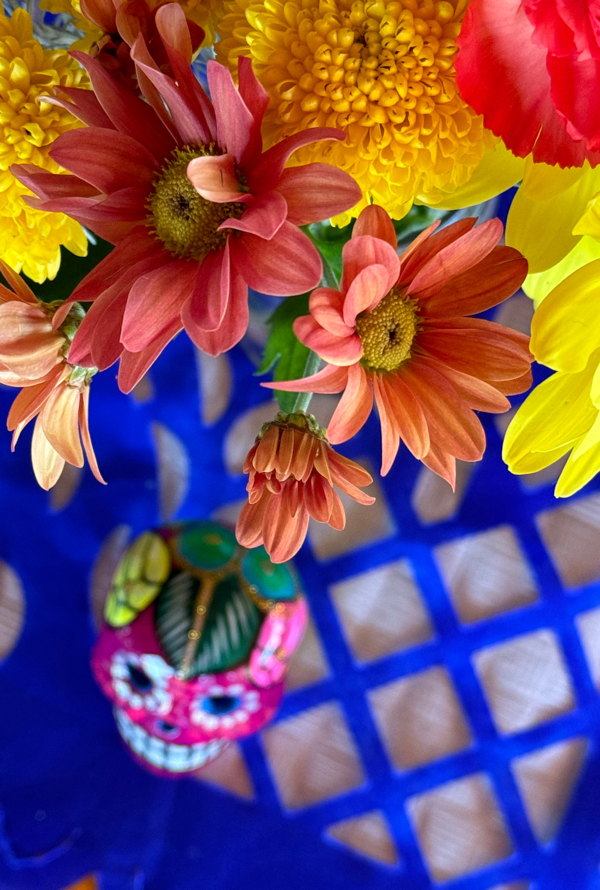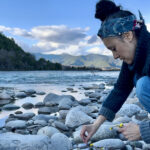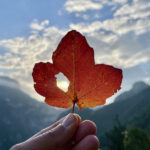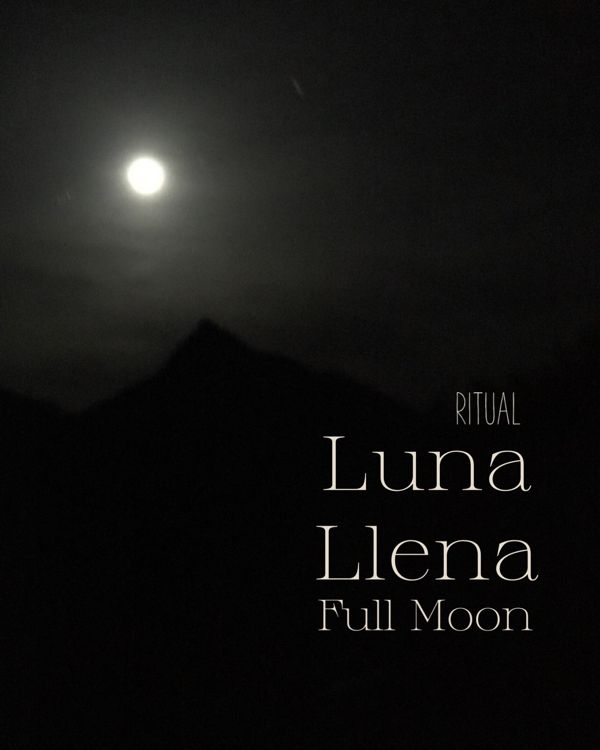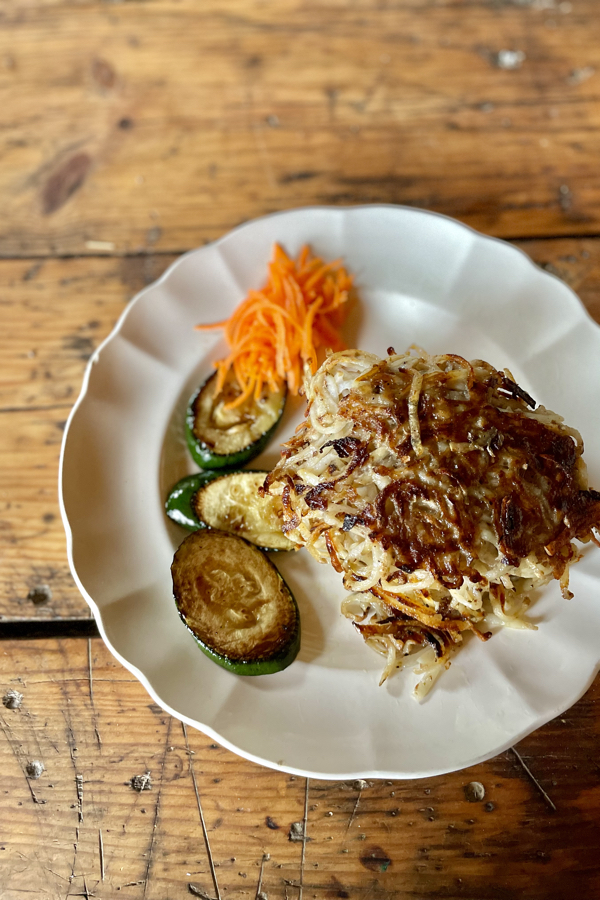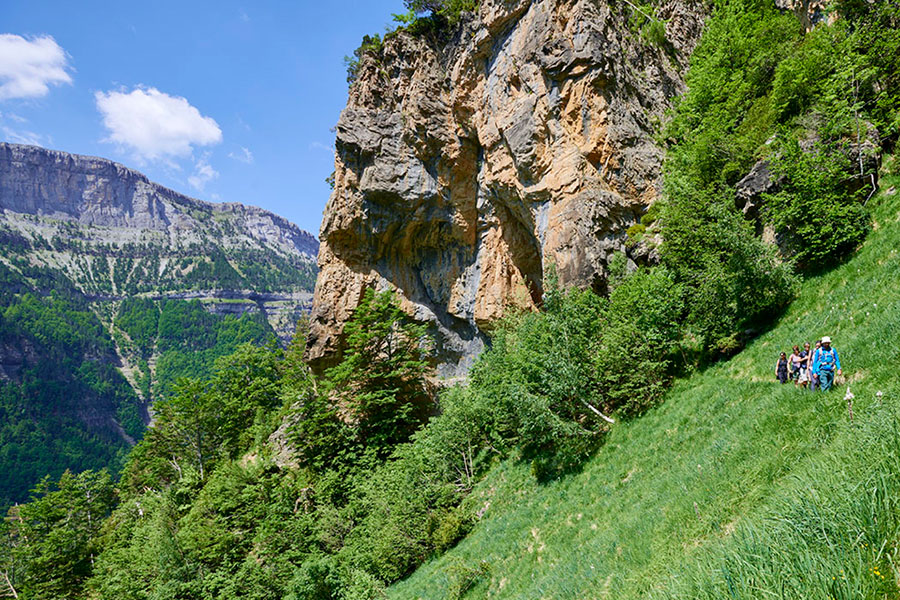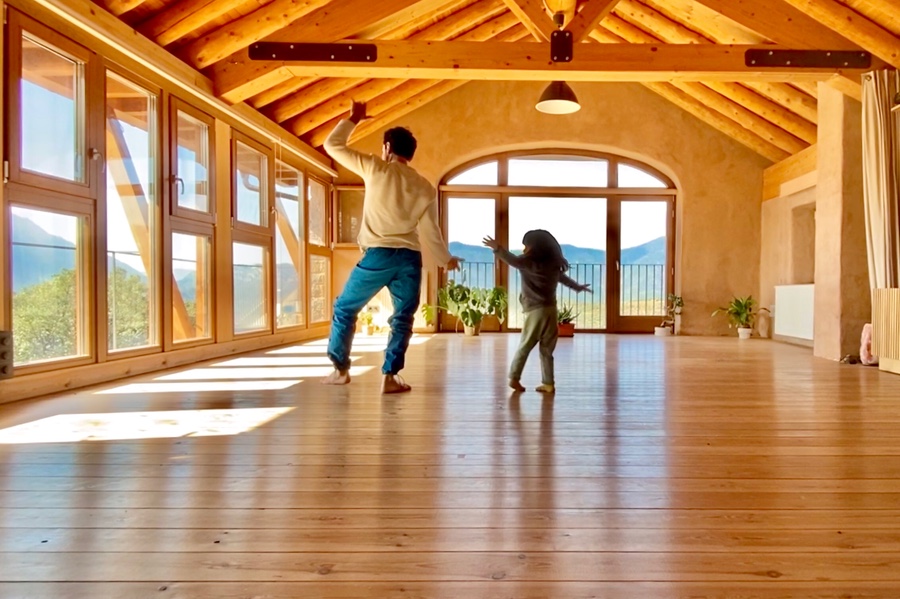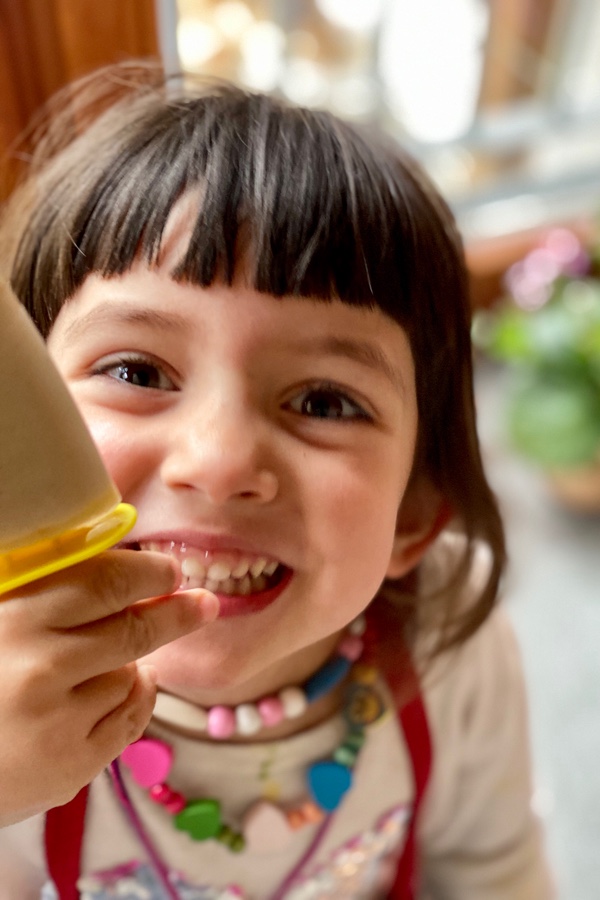The celebration of the Day of the Dead is one of the most cherished and meaningful holidays in Mexico. To be a Mexicana living outside of my homeland, I feel a responsibility to impart the value of this tradition with my family.
At Casa Cuadrau we like to share this celebration with our visitors, offering a different way of relating to death: a more intimate, everyday way and, above all, as a natural part of the cycle of life and nature of which we are a part.
Every year we offer a special Day of the Dead retreat, where we combine this tradition with yoga, meditation, art, and connection with nature. This year, though we cannot hold the in-person retreat, we want to share with you how to celebrate this tradition yourselves, in the privacy of your own home, with your loved ones.
This is a time we dedicate to honoring, in a grand way, our beloved departed—our dear ones—and our ancestors, who live on in our hearts and memories.
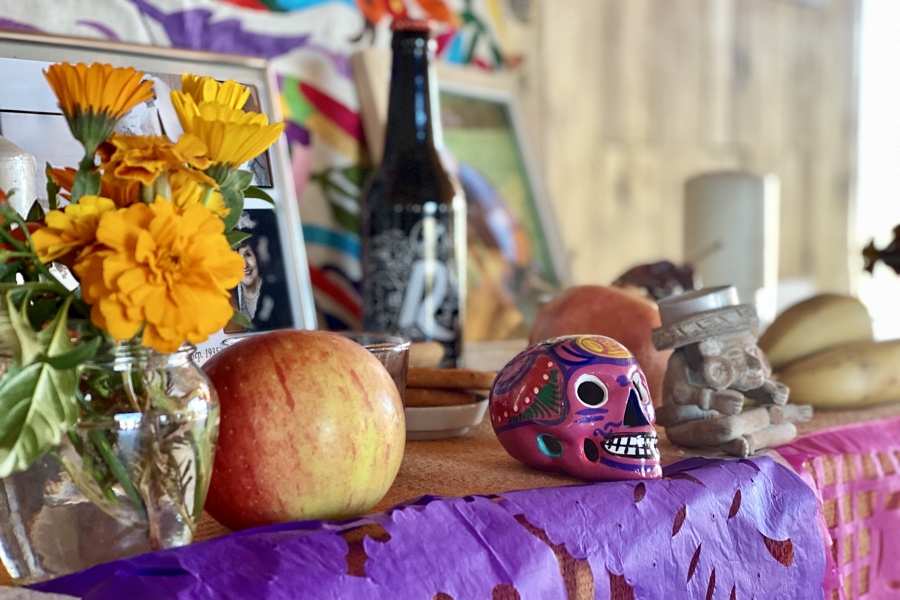
Nature Calls Us to Transformation
At this time of year, autumn, nature herself invites us to connect with death, or rather, with transformation. The leaves fall from the trees, the colors intensify, just before the earth settles down to rest for the winter. Cycles end—to be reborn later.
There is a Zen saying that is one of our favorites and which has helped us through many personal losses: “A cloud never dies.” Applicable to all living beings, it helps us to see death from another perspective: everything is transforming, continuously and endlessly.
And we celebrate our departed loved ones to remember their essence, their stories, their teachings and gifts. To express gratitude for that which they lived, that which they taught us, and that which they left us with, both consciously and unconsciously.
If we don’t make space to honor their lives, who will?
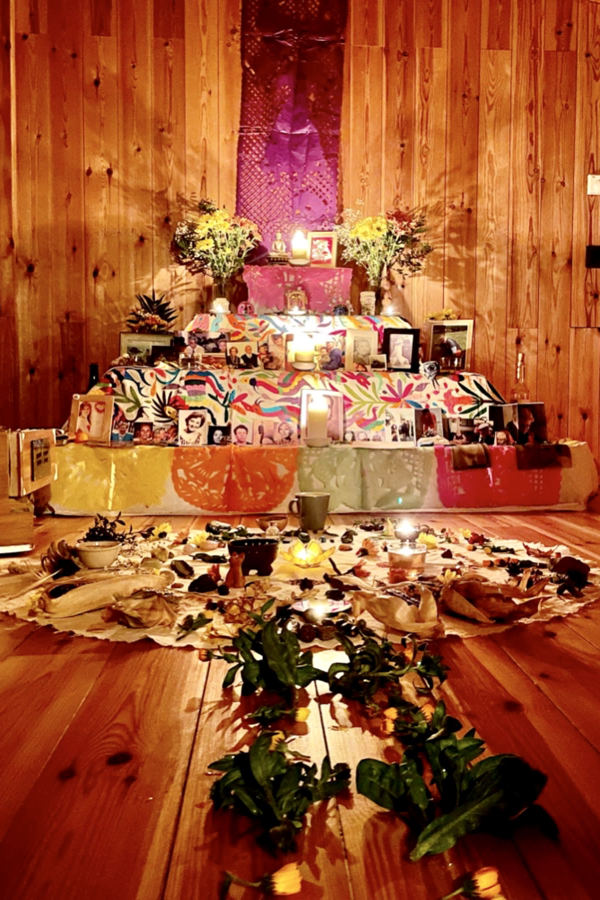
Songs and Flowers According to the Toltecs
We can honor their lives with an altar and a celebration, but also—and this is fundamental—we should honor them with our very lives: with our words (songs) and our actions (flowers).
We are the continuation of their stories, of their genes, of their teachings.
What do you wish to leave behind in the world? How would you like to be remembered?
According to the Toltecas, the most valuable things we can offer in this life are our songs and our flowers. Our blood ancestors and our spiritual ancestors have left us many songs and flowers, and in turn, we leave them to future generations.
All of this, accepting with compassion that our ancestors did the best they could under the circumstances they faced.
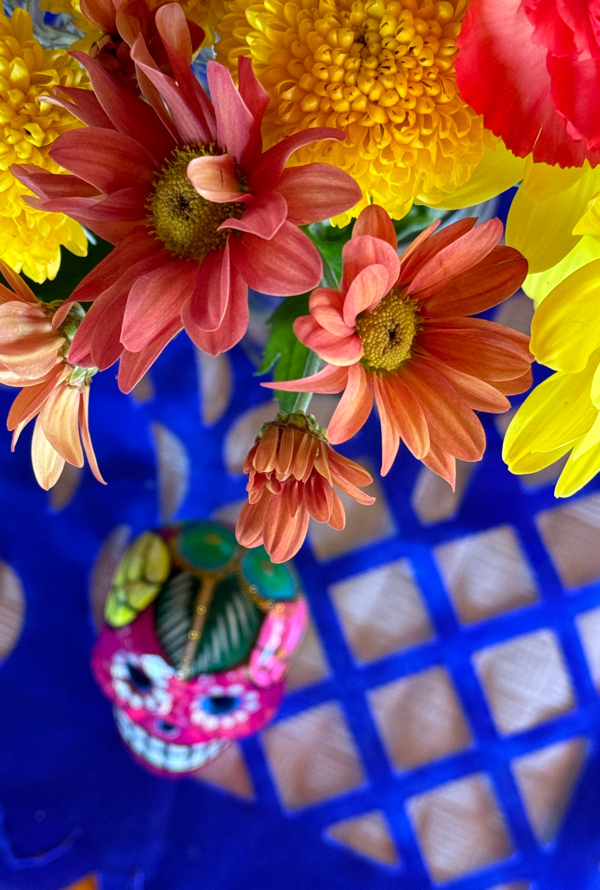
Create your offering as a creative and sacred act
Would you like to make an offering to your beloved deceased and ancestors?
This is an opportunity to connect, heal, and complete your relationship with those who are no longer on this plane. A sacred space to remember their “flowers” (actions), celebrate them, pardon them, ask their forgiveness for the mistakes we made when they were living… or simply to nurture the bond with your ancestors and beloved deceased.
An offering can be as simple or complex as you choose to make it. Whether personal or family-oriented, it is an intimate, creative act.
Art with the Four Elements:
The traditional offering is a vibrant “work of art” that integrates the four elements of nature:
WIND – The colorful papel picado (cut paper) which dances in the breeze and enters through the window. You can create it yourself as a meditative act, or use tissue paper or crepe paper.
FIRE – Candles that illuminate the way back. Their light reminds us of constant transformation, wisdom, and the teachings they have left us.
WATER – A glass of fresh water and their favorite drinks. Water purifies and renews.
EARTH – The fruit and foods they loved, as well as seeds and flowers. All that the earth offers us and all that will return to her.
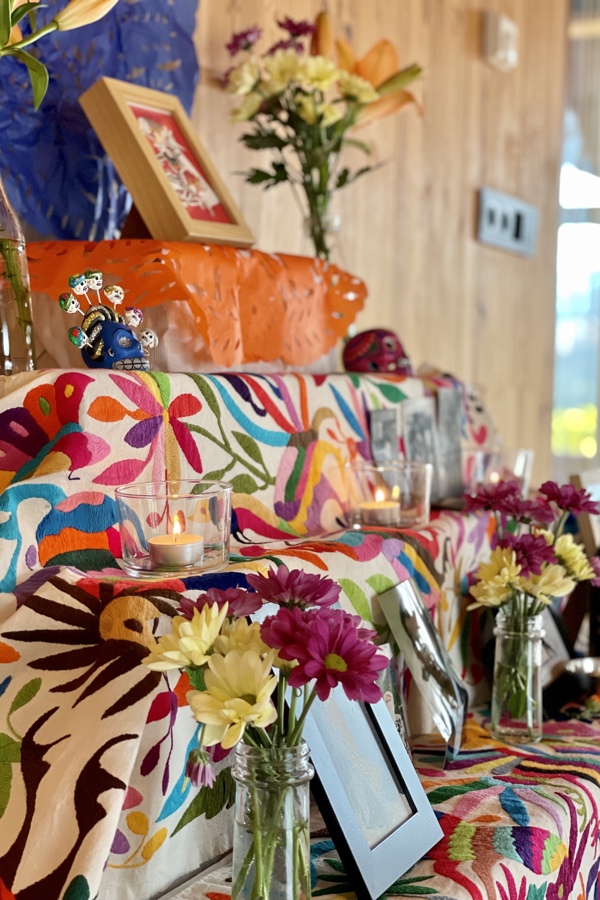
The Ritual
The road to Mictlán: To complete your offering, you can create a path of flowers or petals toward the north, oriented to Mictlán (the eternal resting place in Mexican/Toltecan comology). This act of creating beauty with natural elements is a form of active meditation.
Your offering: Once you have your offering ready, I invite you to take a moment, in silence, to light the candles. Through this conscious act, offer the light in gratitude for all that they represent in your life and for the legacy they have left you.
We invite you to share this moment alone, with family, or with community. You can sit before the altar in silence, alone or with your family, breathe deeply, and allow the memories to flow. Observe how they come and go. Feel your ancestors (of blood or spirit) near, behind you, how they support you, with all they have done so that you could be here today.
Humor as medicine
In Mexican tradition, the papel picado (cut paper) often represented the funny and amusing exploits of the dead.
So we also invite you to remember the funny moments, the anecdotes etched in your memory that bring a smile to your face. Death, in Mexican tradition, is not only mourning and sadness, it is also celebration and joy for what has been lived, for what has been passed on, for what has been learned.
Laugh, sing to them, dance, tell their stories. This, too, is honoring.
Tell us about or send us photos of your offering.
May this offering be an honest and loving gift that elevates your spirit and consciously connects you to the web of life, NATURE, of which we are all a part!
Un abrazo (a hug),
Katya
